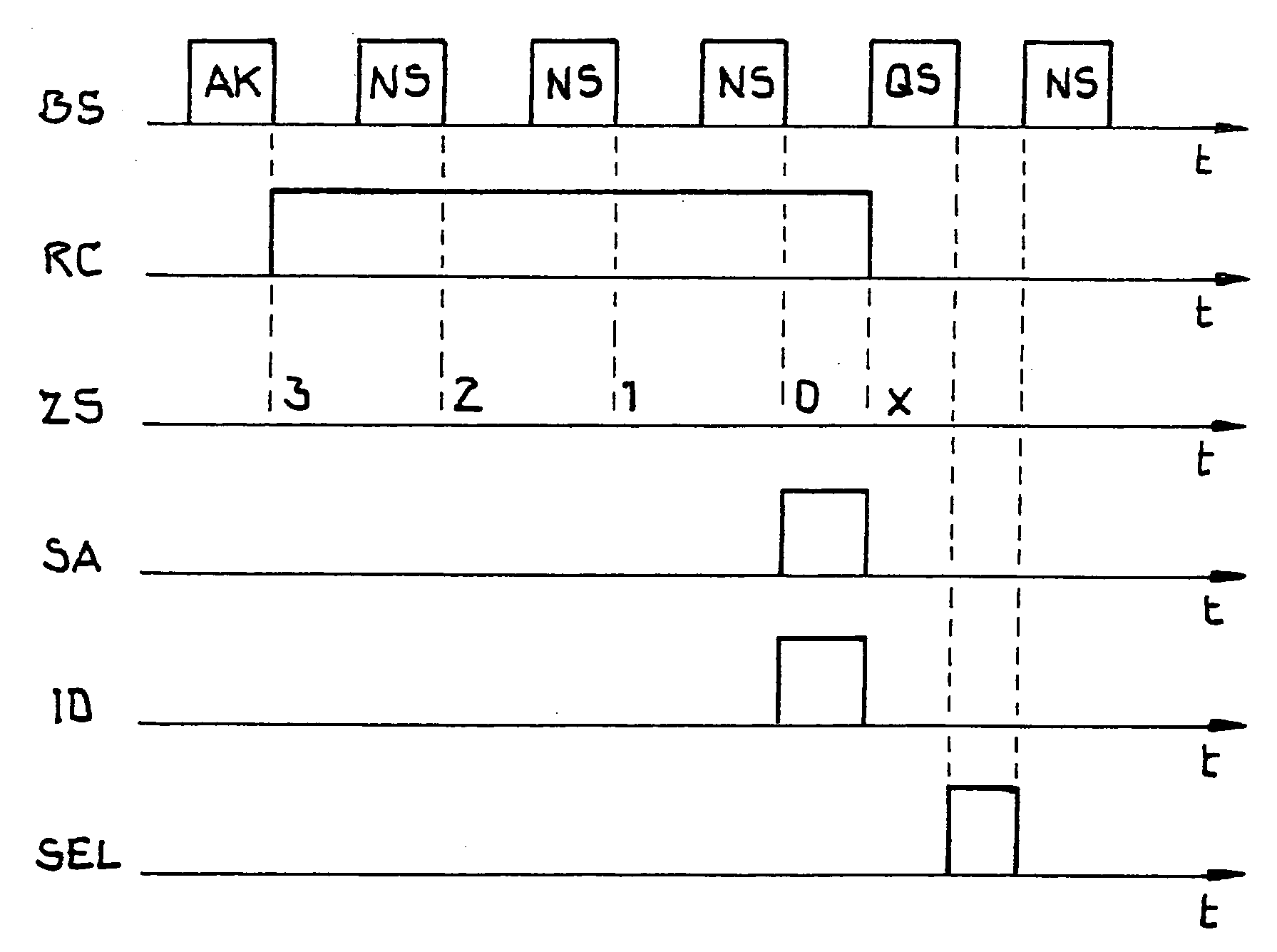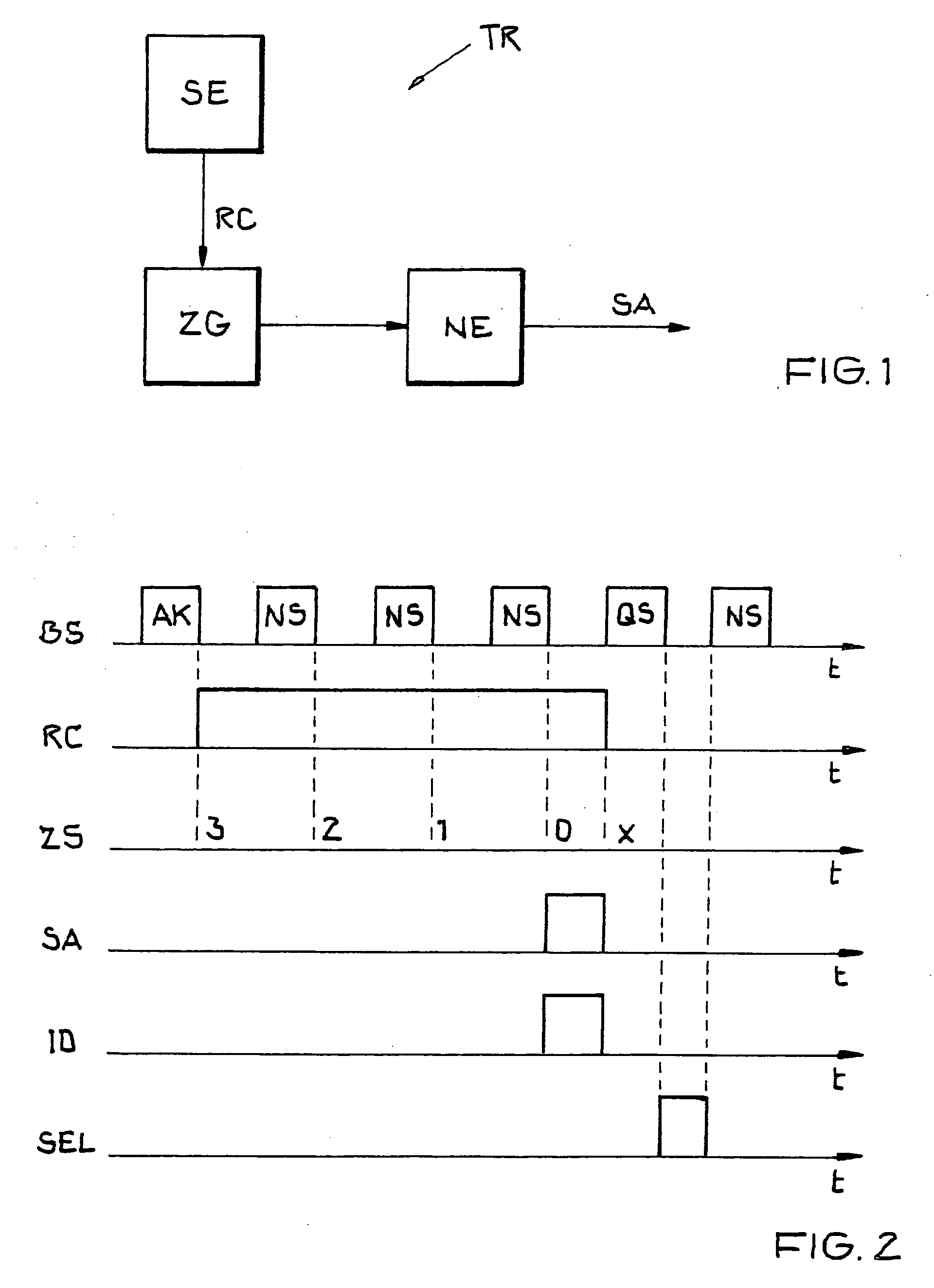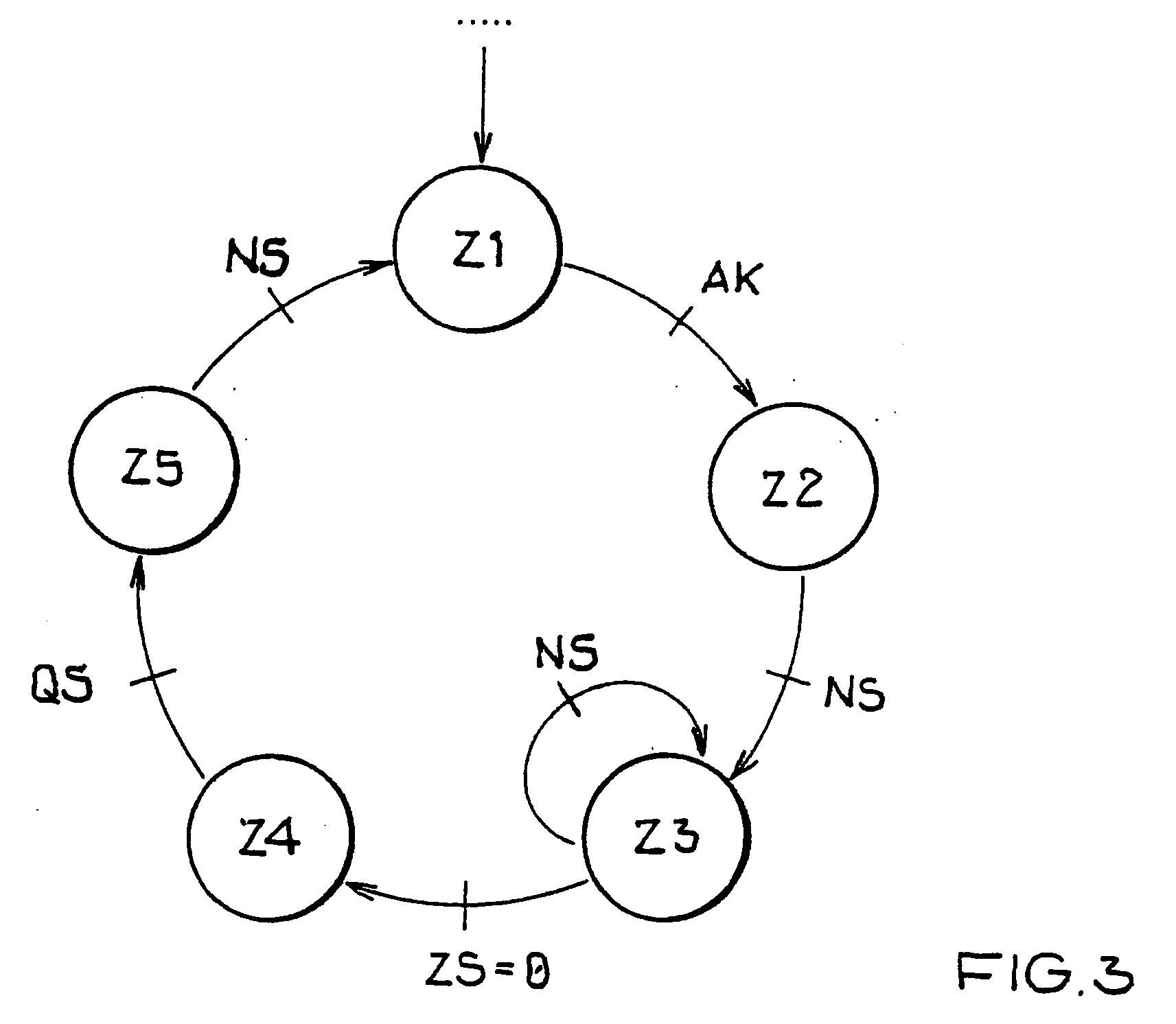Method for selecting one or more transponders
a transponder and transponder technology, applied in the field of selecting one or more transponders, can solve the problems of collision, preventing the base station from being able to receive transmitted data error-free, and not always possible to ensure the uniqueness of u-ids, etc., and achieves the effect of reliable and time-efficient selection and small chip area
- Summary
- Abstract
- Description
- Claims
- Application Information
AI Technical Summary
Benefits of technology
Problems solved by technology
Method used
Image
Examples
Embodiment Construction
[0028]FIG. 1 shows a block diagram of a backscatter-based, passive transponder TR with a control logic unit SE, a random number generator ZG that operates either in an operating mode for generating random numbers or in a counter operating mode as a function of a signal RC provided by the control logic unit SE, and a zero detection unit NE that provides a signal SA, which signal enables the transmission of a transponder-specific identification to a base station.
[0029] In the operating mode for generating random numbers, the random number generator ZG is configured as a linear feedback shift register that is operated with a clock provided in the transponder TR. The clock provided in the transponder TR exhibits a certain dispersion between different transponders, by which means different values arise in the shift registers of the transponders in question after a certain operating period. In the counter operating mode, the random number generator ZG is configured as a conventional coun...
PUM
 Login to View More
Login to View More Abstract
Description
Claims
Application Information
 Login to View More
Login to View More - R&D
- Intellectual Property
- Life Sciences
- Materials
- Tech Scout
- Unparalleled Data Quality
- Higher Quality Content
- 60% Fewer Hallucinations
Browse by: Latest US Patents, China's latest patents, Technical Efficacy Thesaurus, Application Domain, Technology Topic, Popular Technical Reports.
© 2025 PatSnap. All rights reserved.Legal|Privacy policy|Modern Slavery Act Transparency Statement|Sitemap|About US| Contact US: help@patsnap.com



